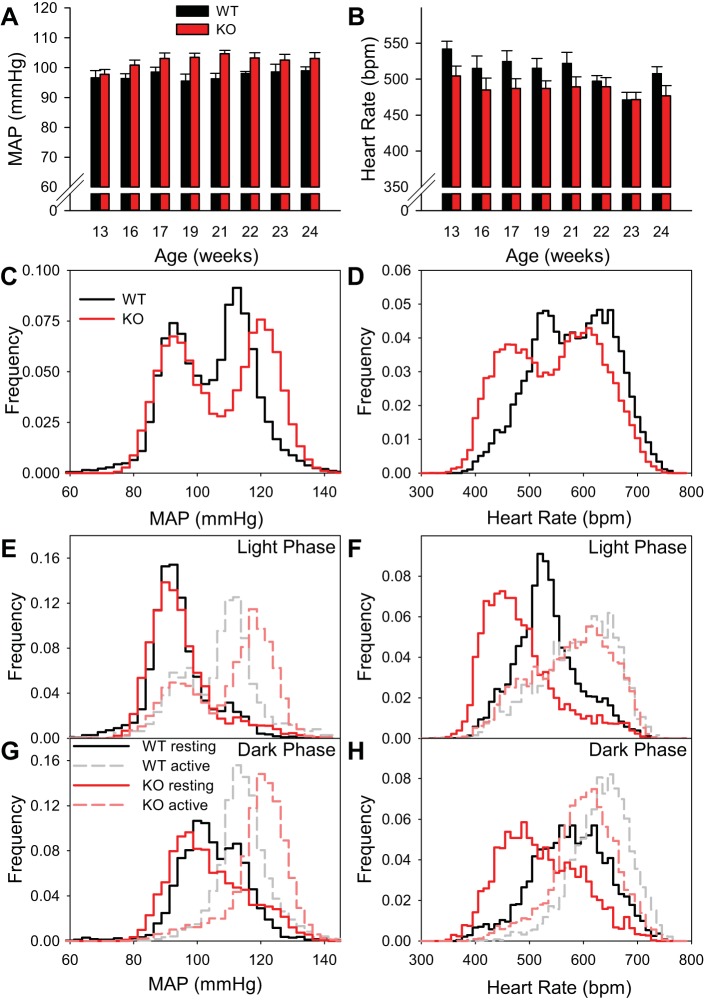Fig. 1.
Conscious Brs3−/y mice have a reduced resting heart rate and an activity-dependent increase in mean arterial pressure (MAP). A and B: light-phase MAP and heart rate from 13 to 24 wk of age in the same cohort of mice. Data at each age are from a weekday 2 h undisturbed interval early in the light phase. C and D: histograms of MAP and heart rate during 1-min intervals. For statistical analysis, the cumulative frequency percentiles for each mouse were compared (n = 5–6/group). MAPs in percentiles 57–80 were higher and all heart rate percentiles were lower (P < 0.05 by t-test without multiplicity correction). E and F: light-phase MAP and heart rate histograms for physically inactive and active intervals. In wild-type (WT) and Brs3−/y (KO) mice, 26% and 34% of intervals were active, respectively. G and H: dark-phase MAP and heart rate histograms for inactive and active intervals. Active intervals were 66% for both genotypes. In C–H, data are the same 48 h in 13-wk old mice as in Table 1. Histogram bins are 2.5 mmHg for MAP and 10 beats/min for heart rate.

